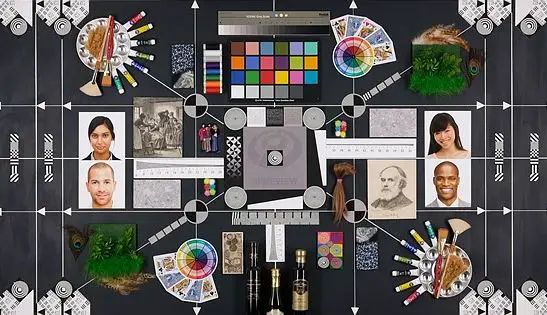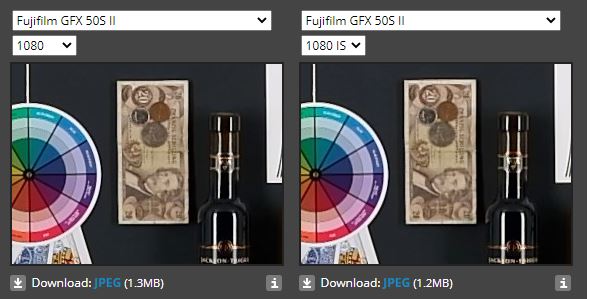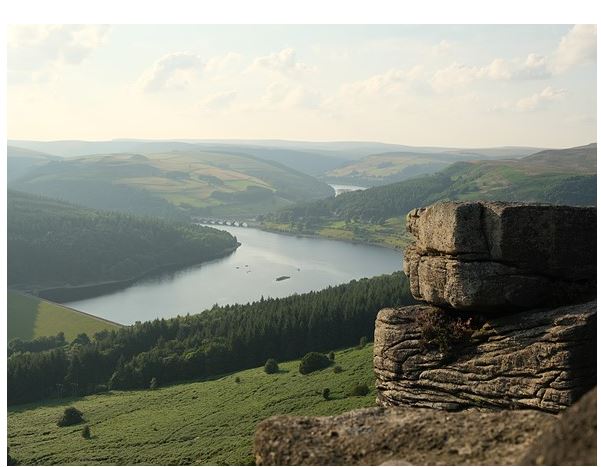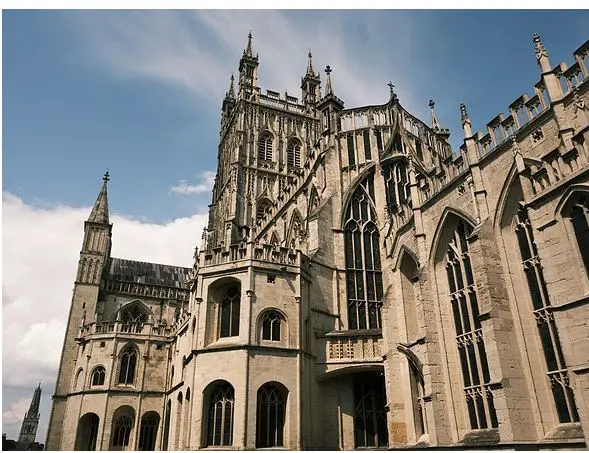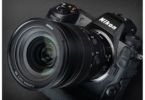
The Fujifilm GFX 50S II is the company’s third 50-megapixel medium format mirrorless camera and the first to feature in-camera stabilization.
In almost every respect, the 50S II is a lower-resolution version of the GFX 100S, sharing more with its high-pixel-count sibling than the original GFX 50S. It means that you benefit from all the improvements Fujifilm has made in the five years since the first GFX 50S was released, but you also see some reduced features.
It is also Fujifilm’s least expensive medium format camera to date, making the 44 x 33mm format more accessible than ever.
Key specifications
- 51MP 44 x 33mm CMOS sensor
- In-body stabilization offering up to 6.5EV correction
- 3.2″ rear touchscreen with two-axis tilt
- 3.69M dot OLED viewfinder with 0.77x (Equiv) magnification
- Top-panel status LCD
- Pixel-shift high-res mode gives 205MP images
- Battery rated to 440 shots per charge (CIPA)
- Full HD video at up to 30p, with headphone and mic sockets
The Fujifilm GFX 50S II will be available later this month at an MSRP of $ 4,000. A 35-70mm F4.5-5.6 retractable zoom lens is released alongside the camera, providing coverage equivalent to 28-55mm. Fujifilm is asking $ 1000 for the lens if purchased separately but adds just $ 500 to the cost of the 50S II if purchased together as a kit.
What’s new?
Image Stabilization
The biggest change compared to the previous 50MP GFX models is the addition of image stabilization. It hardly needs to be said how valuable image stabilization can be, especially for expanding the range of circumstances under which you will get the full resolution of the camera. In one fell swoop, it means that you are much more likely to see the full benefit of the camera when shooting handheld.

This isn’t a particularly extreme example, but in-body stabilization helps maintain sharpness even when shooting shutter speeds at or below 1/equivalent focal length.
The GFX 50S II stabilization system earns a rating of 6.5 correction stops when subjected to tests established by the industry body CIPA.
The image stabilization mechanism also enables the camera to offer a multi-shot pixel-shift high-resolution mode that shoots and combines 16 images with fractional sensor changes between each. No attempt has been made to correct movement in the camera or in the scene, so a tripod and a static object are required for this function.
Viewfinder

One area where the 50S II loses, compared to its predecessor, is in terms of its viewfinder. It uses a similar 0.5 “type 3.69M-dot EVF OLED panel, but uses the smaller, lower-magnification optics of the GFX 100S, giving it an ‘only’ 0.77x magnification (in full-frame terms). This is below the 0.85x magnification of the original 50S, but is still competitive with Canon’s EOS R5, for example.
The other area in which the 50S II lags behind its predecessor is that the visor is integrated, rather than removable, which also means that there is no option to add the EVF-TL1 tilt adapter between the body of the camera and viewfinder.
Updates since the GFX 50S
The original GFX 50S received a number of firmware updates and feature enhancements, but these have not included all the small feature enhancements Fujifilm has made over the five years since its launch. The GFX 50S II gets a number of small feature additions that have not made their way back to the previous camera.
- Lossy Raw compression option: This may seem like an odd thing to add when there’s already a lossless compression option but it allows smaller Raw files with little-to-no visual loss of quality, which may suit some photographers.
- DR Priority mode: This adjusts exposure to protect highlights (like the standard DR modes) and also brightens the shadows to maximize the amount of dynamic range shown in the images. ‘Strong’ uses DR 400 mode exposures and a big shadow lift, ‘Weak’ uses DR 200 exposures and doesn’t brighten the shadows so much. ‘Auto’ appears to pick between these two settings (never selecting the ‘off’ setting). We found the results a bit over-the-top, but only the change in exposure has any impact on the Raw, so there’s no harm trying them in high-contrast conditions.
- Nostalgic Neg and Eterna Bleach Bypass film simulations: These give the camera a total of 19 color modes (if you include the variants of Acros and Black & White modes that simulate the use of a colored filter in front of the lens).
In total, Fujifilm says there have been 79 minor adjustments to the camera’s behavior and operation since the introduction of the original 50S.
GFX100S features not present / Video
Because the GFX 50S II uses the same sensor as the original model, there are a handful of features that you don’t get from the GFX 100S. The most obvious is resolution, but it also lags behind in terms of video. While the 100S can record 4K video, the 50S II only offers 1080p capture and cannot match the 10-bit capture of its higher resolution twin.
So while you get the ability to record to the capacity of a memory card and options like linear focus response for video recorders that rely on manual focus, there are no major improvements in video quality.
How it compares
Fujifilm has priced the 50S II $ 500 lower than it released the 50R, even though the new camera is gaining image stabilization – a major improvement for many of the types of shots that it does well. This puts it much closer in price to the likes of Canon’s EOS R5 and other high-resolution full-frame camera bodies.
There are still differences in terms of lens costs, but many of the Fujinon lenses justify their higher prices well.
| Fujifilm GFX 50S II | Fujifilm GFX 50R | Nikon Z7 II | Canon EOS R5 | |
|---|---|---|---|---|
| MSRP | $4000 | $4500 | $3000 | $3900 |
| Sensor size | 44 x 33mm | 44 x 33mm | 36 x 24mm | 36 x 24mm |
| Resolution | 51.1MP | 51.1MP | 45.4MP | 44.8MP |
| Image stabilization | In-body (lens IS combines for pitch/yaw) | Lens only | In body (lens IS takes over pitch/yaw) | In-body (lens IS combines for pitch/yaw) |
| Burst rate | 3 fps | 3 fps (EFCS) | 10 fps | 12 fps (Mech) 20 fps (Elec) |
| Shutter speed range | 60 min – 1/4000 (EFC or Mech) 60min – 1/16,000 (Electronic) inc auto-switching mode | 60 min – 1/4000 (EFC or Mech) 60min – 1/16,000 (Electronic) inc auto-switching mode | 15 min – 1/8000 | 30 sec – 1/8000 |
| Flash sync | 1/125 | 1/125 | 1/200 | 1/250 (EFCS) 1/200 (Mech) |
| Raw options | Compressed Lossless Comp Uncompressed | Lossless Comp Uncompressed | Compressed Lossless Comp Uncompressed (all 12 or 14-bit) | Dual Pixel Raw Lossless Comp Compressed (14, 13 or 12-bit, depending on mode) |
| Top-panel display | 1.8″ 69.7K dot Memory LCD (303 x 230) | None | OLED (Res not published) | 16.4K dot Memory LCD (128 x 128) |
| EVF | 3.69M dots 0.77x Mag (Equiv) | 3.69M dots 0.77x Mag (Equiv) | 3.69M dots 0.8x Mag | 5.76M dots 0.76x Mag |
| Rear display | 3.2″ 3.69M dots 2-way tilt | 3.2″ 3.69M dots 2-way tilt | 3.2″ 2.1M dots Tilting | 3.2″ 2.1M dots Fully-articulated |
| HDR options | None | None | None | 10-bit HEIF stills (PQ) 10-bit video (PQ) |
| Card Types | 2 x UHS-II SD | 2 x UHS-II SD | 1x CFe Type B 1x UHS-II SD | 1x CFe Type B 1x UHS-II SD |
| Battery life (LCD / EVF) | 440 / unspecified | 400 / unspecified | 380 / 360 (440 / 420 power save) | 490 / 320 (power save) |
| Dimensions | 150 x 104 x 87mm | 161 x 97 x 66mm | 134 x 101 x 70mm | 139 x 98 x 88mm |
| Weight | 900g / 31.7oz | 775g / 27.3oz | 705g / 24.9oz | 738g / 26.0oz |
Unsurprisingly, smaller sensor cameras offer faster shutter speeds and faster flash sync speeds (since their shutters don’t need to travel that far), but in most respects, the Fujifilm offers a spec. competitive and a sensor that is 70%. larger. The camera itself is a bit larger too, but not overwhelmingly, which means that for some types of shots it seems like a credible way to gain access to a larger-than-full-frame world.
Body and handling
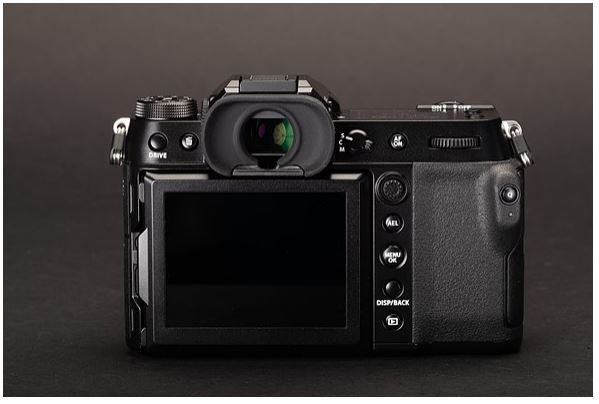
The GFX 50S II uses the same body as the GFX 100S, which means that it is slightly smaller and lighter than its predecessor. It also means that the only dedicated dial on the camera is an exposure mode dial. The loss of a dedicated shutter speed dial frees up space for a larger top panel display, which can be configured to display a histogram, a representation of the virtual shutter speed/aperture dials, or a customizable settings screen.
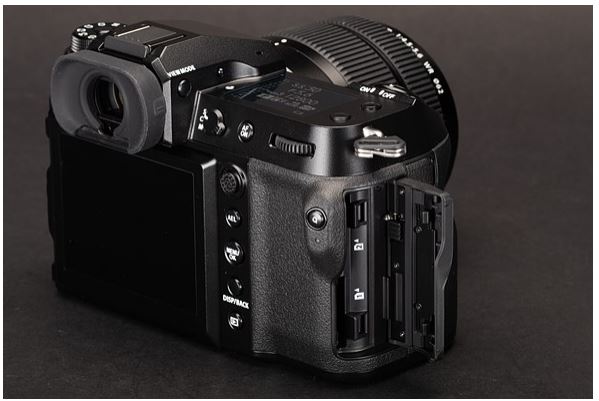
The GFX 50S II has a pair of UHS-II SD slots behind a removable door, which has rubber flanges for environmental sealing.
There are two well-placed command dials on the front and back edges of the camera, which are again customizable. Both dials can be pushed inward to toggle between their assigned functions. There’s also an AF joystick, which is larger and flatter than the one on the old 50S, and we found it more comfortable to use and easier to move precisely.
Unsurprisingly, there are plenty of customization possibilities. Eight physical buttons and four directional swipes on the rear touchscreen can be reused to provide quick access to your favorite settings. The camera’s ‘Q’ quick menu can also be modified to include the options of your choice in the order that makes the most sense to you.

We found the exposure comp button to be a little awkwardly placed, so customized it to act as a switch (rather than needing to be held down), to make the rear command dial a full-time Exp Comp dial.
The camera retains a rear screen that can be tilted on two axes, meaning you can tilt it to shoot at waist level in both horizontal and vertical orientation. It’s still our favorite design for a focus photo camera.
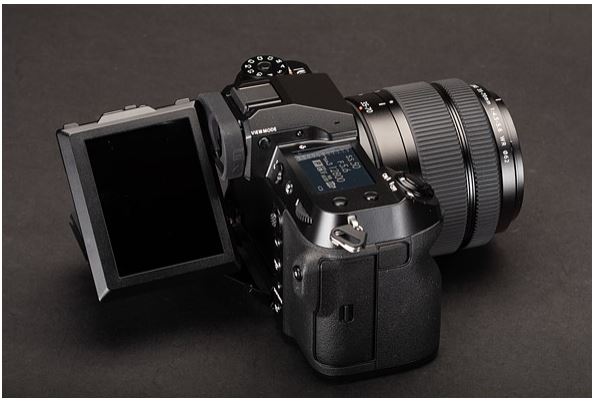
The magnesium alloy construction of the body has a distinctly dense feel which, in a camera of this size, means that it ends up feeling quite heavy compared to other mirrorless cameras. Whether you perceive this weight as a sign of solid, high-quality build or an obstacle to travel, it will probably depend on how you plan to use the camera.
Battery
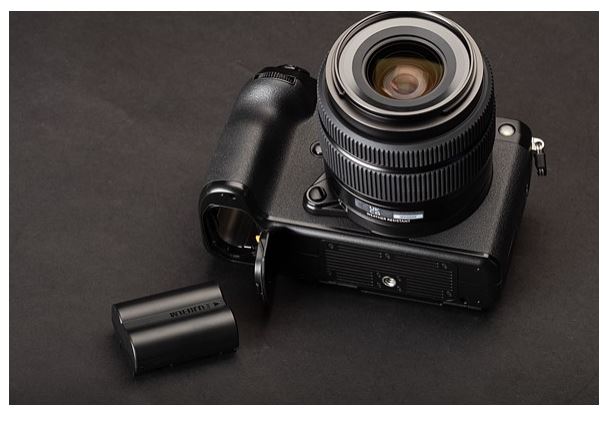
Another area where the GFX 50S II looks more like the 100S is the use of a smaller NP-W235 battery. Despite its smaller size, it can deliver 16 Wh of power, instead of the 14 Wh of the earlier NP-T125 unit used in the older camera. This helps the Mark II deliver a battery life of 440 shots per charge, using CIPA standard test methods. As usual, it is common to get up to double this number in daily use.
The GFX 50S II comes with an external charger and can also be charged via USB.
Image Quality
Our test scene is designed to simulate a variety of textures, colors, and types of details that you will encounter in the real world. It also has two lighting modes to see the effect of different lighting conditions.


The image quality of the GFX 50S II is, unsurprisingly, very impressive. There is a level of detail that many other cameras don’t match. And its larger sensor helps deliver slightly cleaner tones than most full-frame cameras. This advantage of large sensors starts to wear off as ISO levels go up, presumably because it’s being compared to newer sensors – it’s completely gone at super high ISOs.
The JPEG color response is very good, and thanks to a wide selection of fairly subtle film simulation modes and decent processing, Fujifilm arguably delivers some of the best off-camera results of any medium format camera, lo which can be useful even if you just plan to use them as proofs or as a starter guide for your edits.
We suspect the 50S II has the same micro-lens design as previous 50MP Fujifilm models, with pixel gaps to increase pixel pitch that emphasizes (exaggerate?) Sharpness. This carries the risk of moiré in very high-frequency patterns, but it is no worse than its peers, and it seems to clean up well in JPEG, so it shouldn’t be disastrous.
Dynamic range
In terms of dynamic range, the sensor works very well. An ISO 100 file pushed 6 stops shows only slightly more noise than an ISO 6400 image taken with the same exposure (the difference derived from electronic noise, reading). This is a pretty good result, giving the option in low-light and high-contrast situations to remove the ISO setting to retain the highlights, rather than amplify them to the point where they are clipped. You can do this knowing that brightening the rest of the image will not reveal a lot of additional noise.
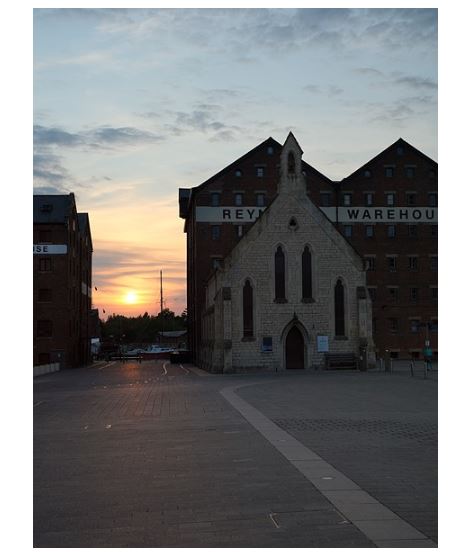
The camera’s DR400 mode used the exposure associated with ISO 400 but with the level of amplification typically used for an ISO 100 shot, helping to protect the highlights of the sunset. The foreground was then brightened and warmed, to better represent my memory of the scene.
At base ISO, if you lower the exposure to capture additional reflections, you can extract detail from very deep shadows if necessary. There will be a noise cost due to reduced exposure, but while the results are not as clean as on the GFX 100S, you can go deep into files without being inundated with noise. This performance is better than most full-frame cameras, but it’s worth noting that the Nikon Z7 II’s ISO 64 setting can always be shot with 2 / 3EV more exposure (with the same shutter speed and depth of field as the GFX), and offers comparable results, down to the deepest shadows.
Image stabilization
What our test scene doesn’t show is the impact of image stabilization. It is one thing to be able to obtain maximum sharpness (or something very similar) with the camera mounted on a heavy tripod, but quite another to do it repeatedly in the real world. We spent three weeks traveling with the 50S II, without a tripod, and we have not had to worry about camera shake in any of the images captured. The stabilization of the 50S II does not improve image quality itself, but it does significantly expand the circumstances in which you will get the best out of the camera.
Autofocus
Autofocus is the GFX’s most significant flaw. Fujifilm says that using a newer processor makes it faster than previous 50MP models, but without the distance-aware phase-detection AF of the 100MP models, it’s still pretty slow. Given advancements in autofocus speed, performance tracking, and ease of use elsewhere on the market, the GFX 50S II feels significantly off the beat.
It can be argued that the higher resolution capabilities of medium format lenses are a legitimate trade-off for the slower focus that comes from having to move more glass, but the GFX 100 series has shown that it doesn’t have to be that slow. Some GF lens designs are faster than others, but all are more agile on the GFX 100 models.

The camera’s eye detection AF can place the focus perfectly on the eye, but it only does so in S-AF, so won’t refocus if your subject is moving. It’s also much more prone to losing its subject than most rival systems, which makes it difficult to depend on.


